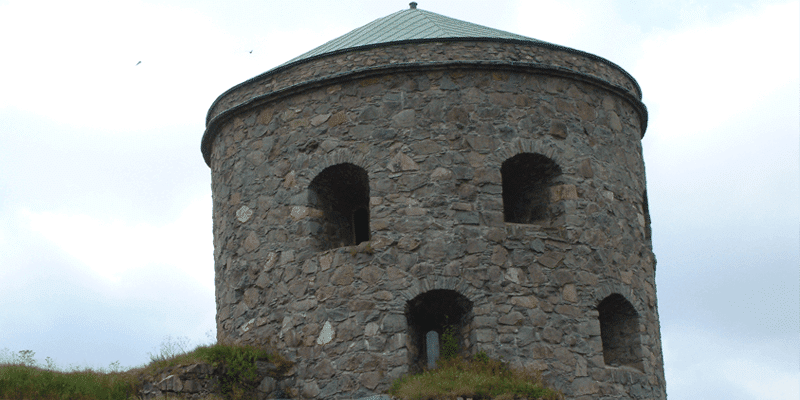The Mature Organization

Mature Organization: this article explains why organizations ought to aim for maturity, and how this maturity can be measured and improved.
Organizational Maturity
Although there’s no clear indication regarding the amount of organizational changes that result into failure, many of such interventions fail.
The 9,7km length new subway, of which only 3,8km is below surface, in the city of Amsterdam has been a topic since 1968, the decision to build it fell in 1996 and construction started in 1999.
Costs exploded from the initial estimate of €1,5 billion to over €3,1 billion, and completion has been postponed several times and changed eight times. It is currently set for the end of 2018.
The UWV (a government institution for the unemployed) had new software developed and after having spent over €18 million decided it was no good. It was tucked away.
These are just two Dutch examples. The Dutch are known for their directness and looking before leaping. What happened here?
An analysis indicates complex and lengthy changes trigger the disasters that are waiting to happen.
Complex, due to the fact that there are many stakeholders involved, certain technological issues add to the risks, there are (public) opinion differences a.s.o. Lengthy changes take years to accomplish. That is a long stretch. And things happen to change over time.
If an organization takes on a task over a long period, there will as a result occur a lot of changes: small as well as big ones.
Differences, changes, time lapses: these are key words.
Mature organizations are able to deal with differences, changes, time lapses. A mature organization is able to effectively and efficiently handle environmental change. That is the definition.
Are mature organizations the old ones? No: they are capable of dealing with change. That’s all. Old organizations may or might not be able to do that. It has nothing to do with age. It has to do with flexibility.
Towers of Maturity
The maturity level of any organization can be measured. There can be a number affixed to it. In the MINCE maturity model, the numbers run from 1 (low maturity, ad hoc organization) up to 5 (mature organization, change is what it all is about).
This maturity model determines the level by measuring across six Towers, which together shape the flexibility (hence: maturity) of the organization:
- People
- Methods & Techniques
- Customer
- Realization
- Knowledge
- Supporting Services
The People (Tower I) shape their organization and for this reason they are considered the most important asset of a mature constellation.
These people, however, cannot prosper without sharing and using coherent Methods & Techniques (Tower II).
Any Customer (Tower III) can make or break the organization. A low maturity Customer might drag your organization under water, or into the swamp. A high maturity Customer will inspire your organization and the people therein.
One in ranking below the Customer influences can be found in the way your organization creates products and/or delivers services to that customer: Realization (Tower IV). How smooth is your operation?
Nowadays Knowledge (Tower V) is more important than ever in history. People store knowledge and re-use it, again and again. Are they re-using erroneous input? – The organization will go down the drain.
Are they re-using and adding effectively to available knowledge? – The organization will prosper, is more likely to stay ahead of what competition is cooking up.
In most organizations nowadays, there are projects and programmes running to implement adjustments. These project and programmes are performed by people grouped for the occasion in a temporary organization: these people do the tasks they are assigned to. As soon as the project or programme is completed, they return to their daily routines.
Projects introduce what is needed by the workers. Programmes adjust parts of the organization, to keep it aligned with external factors. They both run along-side the ‘regular’ organizational processes (production and/or service delivery).
Both projects and programmes trigger a certain amount of administrative tasks. If these administrative tasks are performed by the same people involved in the line organization, it will contribute to the effective exchange of information between line organization and project/programme organizations. This is addressed by means of Tower VI: Supporting Services.
Maturity Levels
Now we have defined six Towers of Maturity, but we also require Levels with each of these Towers.
The MINCE model has re-used the INK model/ EFQM levels for that purpose. For these levels have been well thought over, and they have been used merrily for decades since, so why should we want to re-invent them?
Putting the best level on top, this is what it looks like (including the brief description with each):
| Level | Name | Implication |
| 5 | Quality | Organizational change is well handled |
| 4 | Supply Chain | the supply chain is recognized |
| 3 | Systems | systems and processes are aligned |
| 2 | Processes | processes are recognized and shared |
| 1 | Activities | all are working hard, though lacking co-herence |
Each of the Towers operates at one of these five Levels.
Depicting which Level applies to what Tower is a matter of measuring: either using (for medium-sized to large organizations) questionnaires, interviews or (in the smallest organizations) common sense. A couple of interviews will reveal most of the input required to determine the maturity Level. If questionnaires are used, it is adviced to involve as many people as possible, as doing that will aid in improving the maturity level afterwards.
Maturity Criteria
As with digital photography, one might want as much pixels as possible or, in other cases, decide a basic insight will suffice.
In case a high definition ‘snap shot’ of the organizational maturity is desired, one may decide to utilize Criteria.
These Criteria refine the measurement in each of the six Towers and for each of the five Levels.
The Criteria require a lookout in five different directions, while determining whether or not a certain Level of maturity in a certain maturity Tower is or is not applicable for the organization being investigated.
This is how it works: we go into one of the Towers, to the Level that is currently under investigation, and look out of five different ‘windows’, each of which ‘window’ represents a Criterion (in a Tower at a Level):
| Criterion | Name | Indicating |
| A | Leadership | Are we ahead of others, clearing the road? |
| B | Staff | Have we the optimum, well-equipped staff? |
| C | Policy | Are mission, vision and policy aligned and known? |
| D | Means | Do we have all required means available when needed? |
| E | Instructions | Are there clear instructions for the people available? |
By using the proper questions during the interview or in our questionnaire, we will be able to find out such additional refinement without much fuss.
Maturity Stakeholders
When we are dealing with the matter of organizational maturity, depending on the organization and its goals, there will be a certain amount of Stakeholders to take into account.
In the MINCE model there are four important groups defined:
| MINCE Name | Typology | Role |
| Target Group | managers, CEOs | Acting as change sponsors. |
| Peer Group | employees involved | Employees involved in the change. |
| Employee Group | all employees | All employees in the organization. |
| MINCE Group | MINCE qualified | Qualified MINCE staff involved. |
The Target Group funds the maturity improvements aimed for.
The Peer Group aids in getting the organizational improvement-aim known and they prepare settings for the kick off, interviews, questionnaires a.s.o.
The Employee Group focuses on the information spread to all, or most of, the people in the organization, so that nobody will feel left out.
The MINCE Group may house internal or external staff with knowledge of the maturity model.
Reporting Maturity
All the above will trigger reporting. Reporting may only deal with what is the ‘Status Quo’ or, alternatively, it might also report on the proceedings with regard to the maturity improvements that are aimed for.
We can distinguish the following reporting typologies:
| Report | Basis | Variants |
| Bronze | questionnaire | slim or full version |
| Silver | interviews | external MINCE specialists shape the MINCE Group |
| Gold | interviews | internal staff shapes the MINCE Group |
This list clearifies how interviews, even if it are only a few of those, are considered more reliable and valuable in comparison to the use of questionnaires.
The Silver or Gold Reports may also use a combination of interviews and questionnaires, which adds an additional checking-mechanism: the outcomes should be equal.
Action Flavors
Having determined the organizational maturity as it is today, the underlying constructs and having reported it all to the Target Group, the next step may well be the desire to reach for a higher organizational maturity.
In such a case, there are Action Flavors available, to aid that process.
Using these Action Flavors, and ‘translating’ these from generic phrases to text that is applicable to the organization we are dealing with, will be in line with what was measured and it will provide insights as to the steps to undertake, as well as the order to undertake them in:
| Action | Flavor | Indicating |
| AF1 | Quickening | What is urgent and what can wait? |
| AF2 | Broadening | Changes should take place over organizational ‘colums’. |
| AF3 | Deepening | Changes should in each ‘column’ cover the full depth. |
| AF4 | Preservation | Learn by doing and do not forget what has been learned. |
| AF5 | Tailoring | Changes require audience-aimed translations. |
| AF6 | Interrelating | Change A may have impact on change B: deal with that. |
| AF7 | Explicitation | Goal setting with changes, that people can relate to. |
Besides the above, in general, the visualization of changes, aims, accomplishments a.s.o. is highly recommended, since ‘a picture is worth a thousand words’.
It’s Your Turn
What do you think? How do you measure the maturity of an organisation? Do you recognize the practical explanation or do you have more additions? What are your success factors for creating a healthy mature organization?
Share your experience and knowledge in the comments box below.
More information
- Meisner, R. (2013). MINCE: A Framework for Organizational Maturity. St. MINCE Foundation / Van Haren Publishing.
- Website Mince: https://www.mince2.nl/
- Zweege, C. ten, Meisner, R. & Weintré, W. (2009). Wegwijzer voor modellen voor organisatievolwassenheid bij projectmanagement. Van Haren Publishing B.V. (Dutch).
How to cite this article:
Meisner, R. (2017). The Mature Organization. Retrieved [insert date] from ToolsHero: https://www.toolshero.com/change-management/the-mature-organization/
Add a link to this page on your website:
<a href=”https://www.toolshero.com/change-management/the-mature-organization/”>ToolsHero.com: The Mature Organization</a>
Published on: 09/05/2017 | Last update: 18/02/2022












